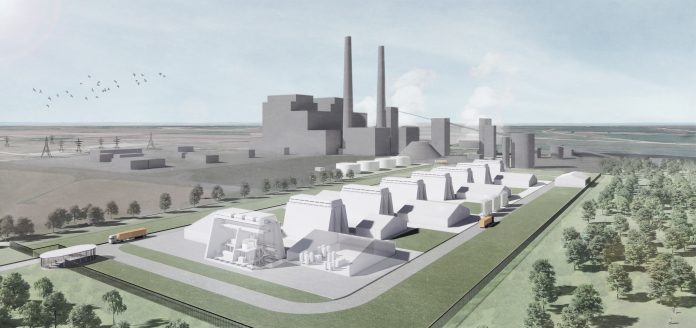International design company Bryden Wood is working alongside TerraPraxis to create a new digital platform to decarbonise electricity by 2050
The ‘Repowering Coal’ initiative will deliver a substantial portion of the clean electricity required to achieve net zero by 2050, by replacing coal-fired boilers at existing power plants with Generation IV Advanced Modular Reactors (AMRs) which will be ready for deployment by 2027.
Bryden Wood has created a new design and construction solution that will make this possible.
‘Speed and agility have never been so important’
Martin Wood, the co-founder, Bryden Wood, said: “We’re building the market for AMRs at the same time as the product itself is being developed.
“The digital tools we’re creating will enable us to have a huge number of projects, across multiple sites, ready to go as soon as the reactors are approved. Speed and agility have never been so important.”
‘Repower the world’s coal fleets’
Eric Ingersoll, co-founder, TerraPraxis said: “This ambitious project will design a process to repower the world’s coal fleets via a fast, repeatable system resulting in carbon negative power plants that are cheaper to operate than before and ensure continuity for communities reliant on these plants for energy and jobs.”
The new system will standardise and optimise the following key elements:
- All processes, including procurement, investment, and approval
- Building and engineering systems
- Design, manufacture, assembly, and operation
- Interactions between different supply chain organizations to enable greater collaboration
A standardised heat transfer and storage system allows the new, small nuclear systems to ‘plug in’ to existing coal plant infrastructure which will deliver a capital cost saving of 28- 35% and doesn’t require major reworking of the existing energy grid.
Standardization will address the differing requirements for a wide variety of AMRs, site layouts, and energy and heat demand.
The component-based design enables the plant to be reconfigured and expanded to accommodate different numbers of AMRs while adhering to Generation IV safety and regulation standards.
A new digital platform
Digital infrastructure will enable design knowledge to be embedded in the building systems, and design tools will ensure that all parties can share progress and results in real time.
The structural components can then be mass produced by existing and new manufacturers and assembled on-site by non-nuclear specialists.
Together, the tools create a completely new, open, digital platform to which everyone has access and can contribute.
‘A seat at the design table for everyone’
Wood added: “There’s a seat at the design table for everyone from plant owners to regulators, to suppliers, AMR vendors, customers, investors and assemblers – everyone involved in the project.
“Now, for the first time, it’s possible to connect these people together with a digital platform and give them access to all the information on their project.”

















